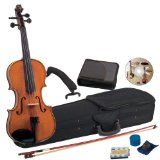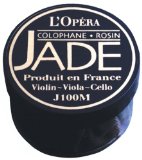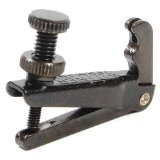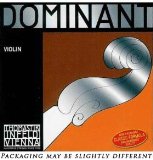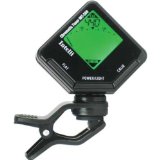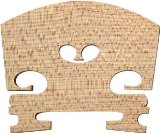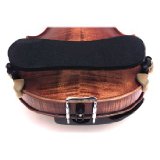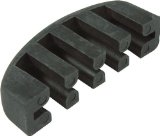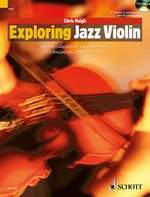
MENU TO FIDDLE STYLES:
Fiddle Equipment and accessories: Fiddles, violins, bows, and strings
On this page we'll look at the fiddle itself.- how to buy one, how to look after it, and the equipment you need to use it.
The first question a lot of people want answered is -What's the difference between a violin and a fiddle? There are two answers to this
1. They're exactly the same instrument- it's just the music and the player that are different
2.The fiddle is actually a broad term covering a whole host of bowed stringed instruments that have a neck, though the name usually refers to the violin.
BUYING AN INSTRUMENT. There is a huge choice of fiddles available, and a lot of decisions to make. Should you buy a new, factory-made instrument, or one newly hand-made? If you want something older, will it make a difference if it's 100 years old or 300? If you're a beginner, and this is your first fiddle, my advice is not to worry about getting a quality violin. Let's face it, for the first few months this is going to seem more like an instrument of torture to those around you if not to yourself, and not even a stradivarius is going to ameliorate the pain and suffering you're going to cause. (OK, maybe I exaggerate slightly). Go for a new, cheap, factory-made instrument. That way, you'll get your violin, strings, case and bow all in good working order- all for probably under 100 pounds. If you have a friend whoís an experienced fiddler who can come with you to the music shop, ask them to try out half a dozen different instruments for you- you'll probably find that even within a batch of apparently identical instruments from the same factory, some are quite a lot better than others. One of the main problems you might encounter with a cheap beginner's violin is that the tuning pegs don't fit so well, and tend to slip. Rubbing a bit of rosin on the peg will help it to tighten up. After a year or so you'll either have realised that playing an Ipod is a lot easier than a fiddle, and taken it down to the charity shop, or you'll have made sufficient progress that you're starting to see the limitations of your instrument, and you can start thinking about buying something with a bit more quality. Something attractive to look at, with a bit of history to it and with a tone- bright, mellow, sweet, powerful, to suit your musical temperament.
Saga Recital Solid Wood Violin
THE VIOLIN BOW.
It is easily possible for a bow to be worth a great deal more than the violin it is playing on, and in the hands of a skilled player it can make a great deal of difference to the sound produced. So what are the basics of what you need to know about your bow? Firstly, as with a young lady checking out a suitor, make sure it has a reasonably full head of hair. The white horsehair strands stretched down the length of the bow are what creates the vibration on the violin strings, creating your sweet, sweet music. Cheap bows may have synthetic hair, which is not as good as real horse hair. A bow that comes with a new violin will have all its hairs intact, but over time these will break, one by one; if your playing ranges from timid to genteel this may take years, but if your playing is more in the aggressive to manic spectrum, it may be more like weeks. When a hair breaks you generally pull out what's left to keep the bow looking tidy (though I did know a devil-may care cajun fiddler who deliberately left the loose hairs on so that they would flap around dramatically as he was playing). When you've lost about a quarter of the hairs, it's time, not to get a new bow, but to get the bow rehaired- a job for which you need to take it to a violin shop/repairer/bow specialist, who will do the job in a couple of days for maybe 20 to 30 pounds. If you're playing every day this can be a bit of an inconvenience, which is why fiddlers often carry two bows with them in the case, so there's always a spare. At the heel, or hand end of the bow you'll notice, at the very end, a section which rotates. You use this to tighten or loosen the hairs of the bow. When you put the instrument away, loosen the hairs otherwise your bow will suffer from prolonged tension. When you are about to use it, tighten the hairs up enough so that, with your right hand in playing position on the bow, you can just about push the wood of the bow down onto the violin strings; if this is too easy, the hair isn't tight enough; if it's too hard, the hairs are too tight.
In cross section, bows can be either octagonal or circular. Personally I find the octagonal ones far more elegant, but in terms of playing there is no difference. When choosing a bow, one of the things to look at is the flexibility or stiffness of the wood. A firm stick gives a bright tone and lots of "lateral stability" (preventing the bow from wobbling from side to side). If it is too firm, though, the sound will be thin and hard to control. More flexible bows have a warmer tone and it's easier to do bouncing (spicatto) bowing.
The weight of a bow can vary from 56 to 65 grammes, and the balance along its length can also vary, effecting how it feels as you handle it and execute the full length of a bow stroke.
Bows are usually made from wood, but recently fiberglass bows have come on the market, which have proved very popular due to their great durability. If your bow is going to double as an offensive weapon, this is the one for you!
Glasser Fiberglass Bow with Horsehair (4/4 Violin)

ROSIN
And don't forget your rosin. Without it the hairs of the bow will slide over the strings without any grip, and you'll not get much sound out of the fiddle. Rub the bow hairs over the rosin, end to end, maybe 20 times. This coats the hairs with the sticky particles (made from pine tree resin), enabling the bow to get a firm grip on the strings.
Jade L'Opera JADE Rosin for Violin, Viola, and Cello
VIOLIN STRINGS
The four strings of a fiddle are the G,D,A and E, E being the thinnest and highest in pitch. To put a string on, first loosen the peg (at the head of the fiddle), and thread the tip of the string through an inch or so. Then, holding the string tight with one hand, wind the peg round a few times. Still holding it tight, position the string over the appropriate groove in the bridge, and attach the other end (usually the ring or hook) to the fine tuner or the hole in the tailpiece. Tighten it to approximately the right pitch using the peg, and then do the final tuning with the tuner. Youíll find the string will keep going flat for an hour or so after putting it on, until itís finished stretching. Classical players tend to use three gut strings (which do not use fine tuners), with only the E being metal and with a tuner, whilst fiddlers usually use all four metal strings and use four tuners.
Wittner Stable-style Black Fine Tuner for 3/4-4/4 Violin
Metal strings are more durable, and can last for months. You know that a string needs changing either when it starts to sound very dull, when you find it difficult to play it in tune (more difficult than usual, that is!), or when the winding starts to give way (youíll feel an unevenness under your finger as you play)- when this happens the string is going to break in the near future. Itís a good idea always to carry at least one set of spare strings- at the very least carry a set of old strings as an emergency back-up. Itís a good idea to change all four at once, since a new string sounds a lot brighter than an old one, and the fiddle will have an uneven tone with one new and three old ones. When you change your strings, donít take all the old ones off together; if you do the bridge will collapse- the strings are all thatís holding it in place. Instead replace each string as you take it off. Some fiddlers like to experiment with alternative tunings- raising or lowering the tone of strings to allow different tonalities and making possible different types of drone. This can be a risky business as neither the strings nor the bridge are designed to take more tension than they are under already. Anything over a tone higher than normal, and a string is liable to snap in protest at your heathen practices.
Thomastik Dominant 4/4 Violin String Set - Medium Gauge - Aluminum/Steel Ball-End E

TUNING
If you have perfect pitch youíll be able to throw an accordion down a well from 100 yards away without hitting the sides. Youíll also know instinctively what pitch a string is, and what it should be, without any external point of reference. Fortunately for accordion players, perfect pitch is very rare, so you will probably need something to tune to. This could be a tuning fork, tapped against your knee (ouch) and then held on the bridge of the fiddle; it will then ring loudly enough to tune to. Alternatively you can get a note from a piano or, increasingly nowadays, from an electronic tuner. The general practice is to get the A string right first, then tune the others to this. Some people (most classical players) do this by bowing two adjacent strings simultaneously, and listening to the interval (which should be a perfect fifth). If the strings are a long way out, you should hear straight away. If theyíre quite close, you will hear an oscillation or pulse. If youíre tuning the string inn the right direction, this pulse will get slower and slower, until it stops altogether. At this point the string is in tune. An alternative method of tuning is to play harmonics on both strings; in this way it is possible to play the same pitch on the two strings and compare them directly.
Intelli IMT500 Clip-on Chromatic Digital Tuner for Strings
THE BRIDGE
It looks like a simple enough thing- an arched piece of wood with four notches, but the bridge is a complex piece of engineering and not to be taken lightly. If you buy a new bridge, letís say to put on an old fiddle that came without any strings, it will come uncut. It needs to be shaped to fit the individual fiddle and positioned in exactly the right place. In short, like the extraction of nuclear fuel rods, or open-heart surgery, itís best left to an expert. Once on, a bridge should last several years without any attention. However it has a lot of work to do supporting the tension of the strings, and eventually it may start to sag. Look at it sideways on; it should be dead straight and horizontal; if on the other hand itís slightly bent, and leaning forwards at the top, then itís not happy and needs some attention. Loosen all the strings slightly, then using two fingers and two thumbs, you should be able to straighten it out. Keep an eye on it; if it keeps sagging, get it replaced.
SHOULDER REST
In the old days fiddlers used to hold the fiddle low down on the chest. This made it easy to walk, or even dance when playing, and also sing (Iím not sure about juggling live eels). However, it meant that the weight of the fiddle was supported by the left hand, which also of course has the job of fingering. As long as the hand is clamped in the same place, thatís not a problem, but if you want to change position, itís a big problem. For this reason the chinrest was created, allowing the fiddle to be clamped comfortably under the chin, with the weight supported by the collar bone or shoulder. However, this still isnít very comfortable; what you need is a shoulder rest- this clamps onto the bottom of the fiddle and raises it above the shoulder. Itís now possible to comfortably hold the instrument horizontal without taking any weight on the left hand at all. This frees the hand to move up and down the neck from first to ninth position without any trouble (easier said than done of course, but letís think positive!) A good shoulder rest, such as the Wolf which I use, will be adjustable for width (of the violin), and height and angle- to shape itself to your chin and shoulder.
Wolf Forte Primo 3/4 - 4/4 Violin Shoulder Rest
MUTE
Small, cheap, but potentially very important; it could mean the difference between marriage and divorce, between a regular practice routine and an old-fashioned lynching.. A mute is a little device which clamps onto the bridge, damping the vibrations and making the fiddle quieter; a great idea if you share a flat with non-musicians, or have thin walls and unsympathetic neighbours. It also gives a much softer tone- Stephane Grappelli often used one when playing delicate ballads.
Glaesel Violin Ultra Practice Mute

Return to fiddlingaround.co.uk homepage
Chris Haigh is a freelance fiddle player and writer based in London. As well as performing in a wide range of styles, he gives fiddle workshops and lectures, including "Fiddling around the World", in which fiddles and fiddle styles from many parts of the world are discussed and demonstrated. He has two books published on Spartan Press; "Fiddling around the World" and "Any Fool can write Fiddle Tunes". "The Fiddle Handbook" was published by Hal Leonard in May 2009. His new cd "Off the Wall" is available from this website. His latest book is "Exploring Jazz Violin", published by Schott.
